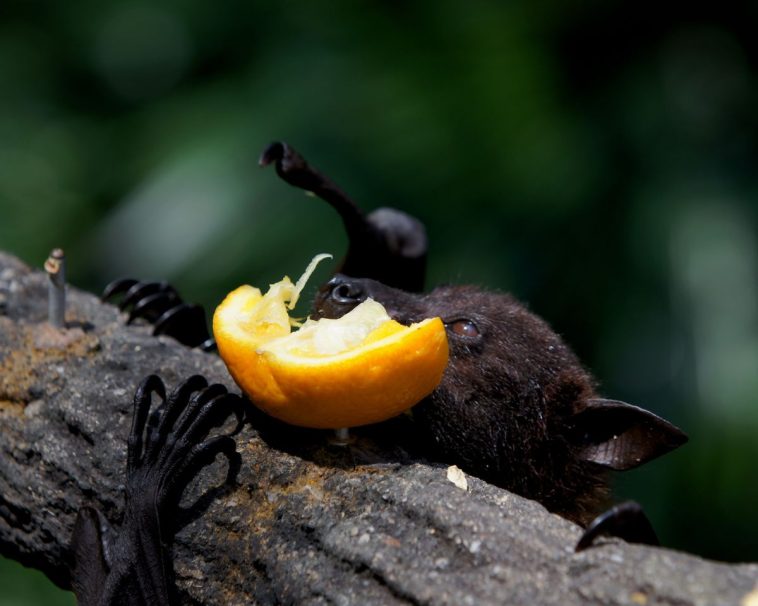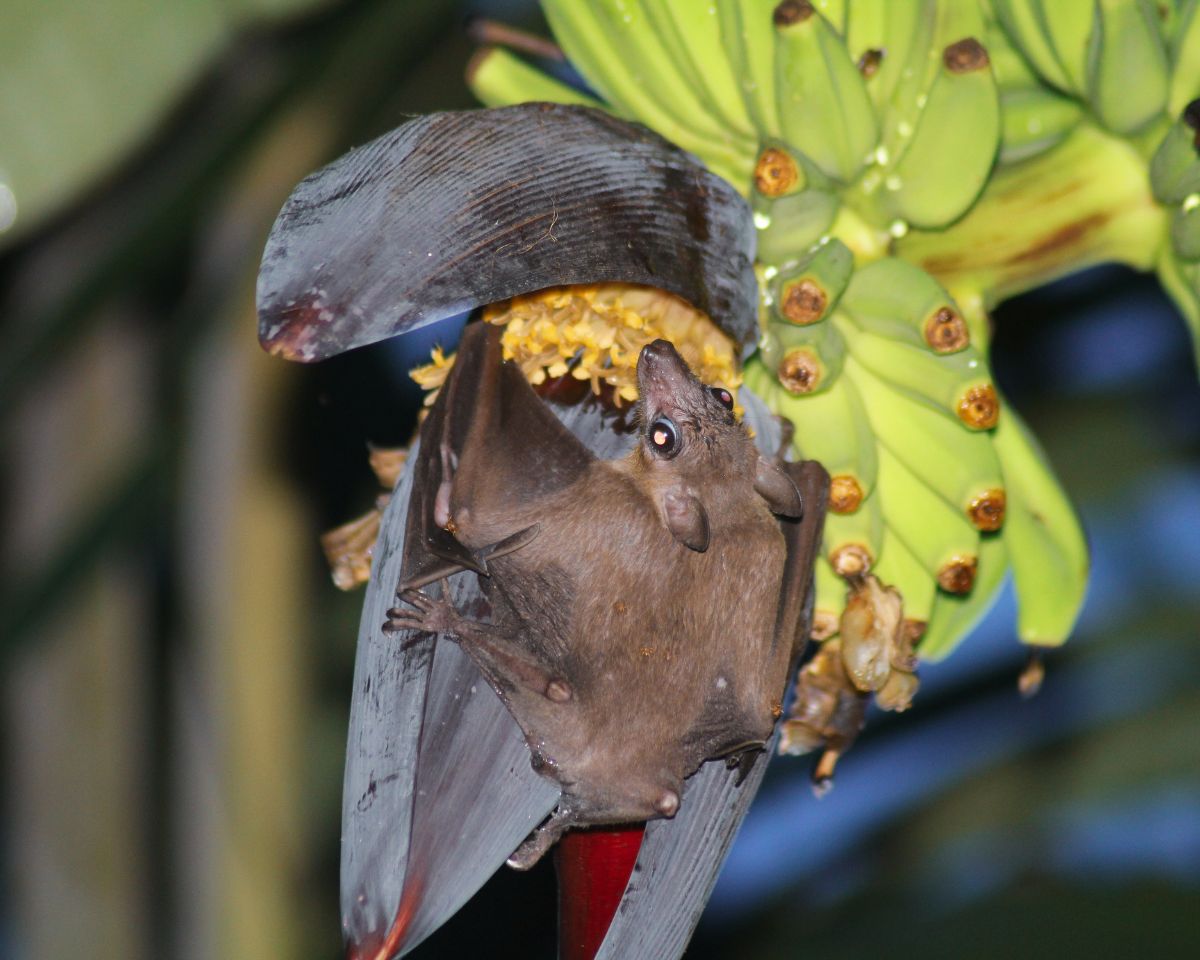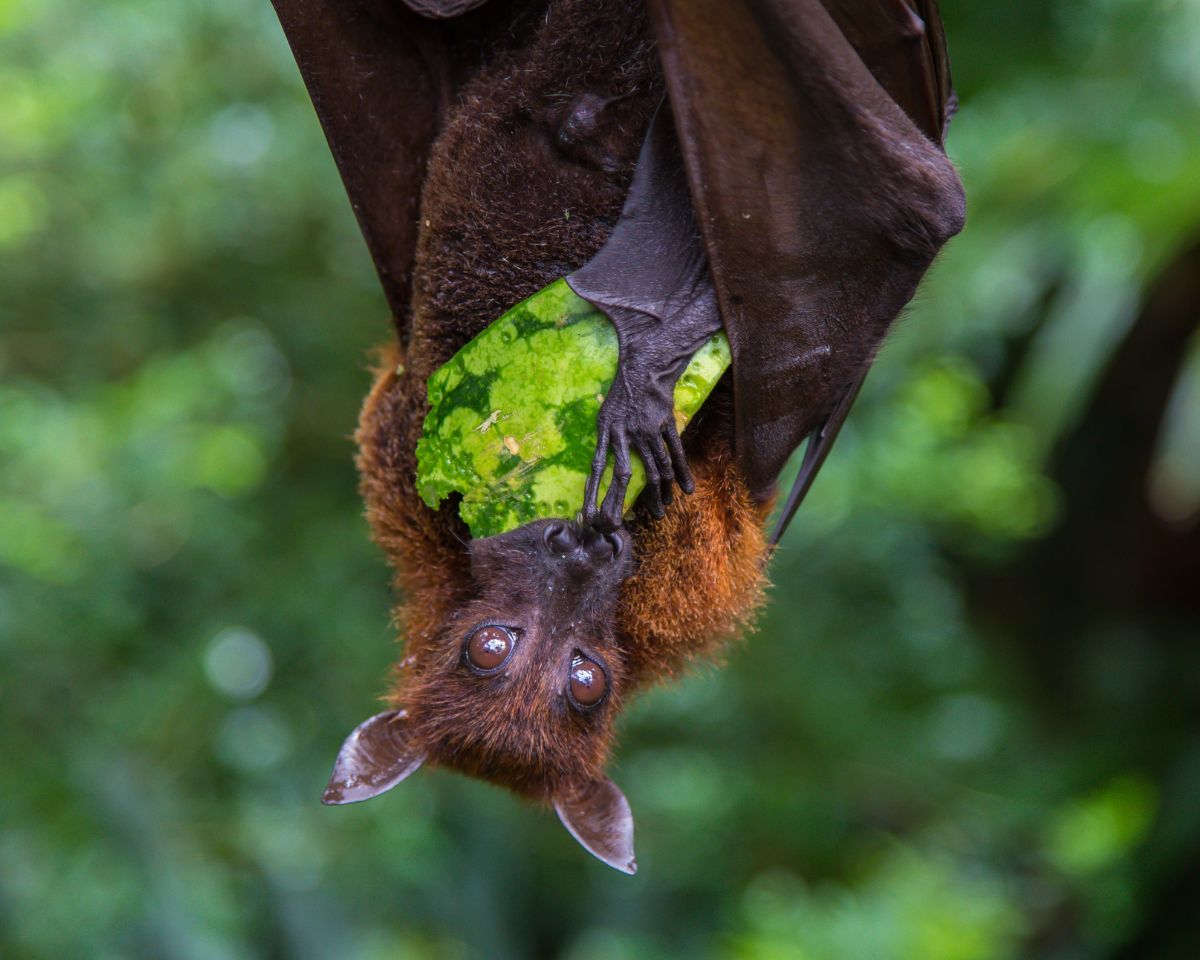Bat Diet

Bats eat insects, fruits, and nectar, depending on the species. Their diet plays a crucial role in maintaining the balance of ecosystems and controlling pest populations.
Bats have a diverse diet that includes insects, fruits, nectar, and even small animals like fish and frogs. They use echolocation to locate their prey and have adapted to different feeding strategies based on their food preferences.
The feeding habits of bats vary from species to species, because of their fascinating characteristics.
Bats have developed multiple foraging strategies in the forests they inhabit. They are able to maximize their survival chances by utilizing their unique flight ability.
Active adult bats eat a lot, consuming 10-15% of their body weight daily, and have a diverse diet. In captivity, most insectivorous bats are given live mealworms as their main food, along with vitamin, mineral, and fatty acid supplements.
Bats have an intricate digestive system that helps them digest different types of food and obtain vital nutrients for survival.
Bats find food sources by using echolocation to locate insects, fruit, and nectar. They are important pollinators and seed dispersers, playing a crucial role in maintaining the health of ecosystems.
Bats adapt their food choices based on their surroundings and what is available to them. The big brown bat, for example, eats flying insects like beetles and moths, but also includes fruits and nectar in its diet when insects are scarce.
Bat Diet Preferences
Bats exhibit remarkable dietary diversity, including insectivores, carnivores, herbivores, and frugivores. Some vampire bats feed on the blood of other animals, although this is rare.
Their diets encompass a wide range of foods, such as insects, fruits, pollen, and nectar. The specific diet of a bat species varies based on its habitat. Tropical bats often consume fruits, while those in colder climates primarily rely on insects.
Bats play a vital role in ecosystems by dispersing seeds, pollinating plants, and regulating insect populations. Their diverse diet preferences contribute to the balance and health of both natural and human environments
Bat Feeding Habits

Bats, with their fascinating characteristics, exhibit a diverse range of feeding habits, varying across species. Their diet components include insects, fruit, and nectar. Their ability to fly enables them to access a wide variety of food sources, setting them apart from other mammals. Bats possess excellent hunting skills, allowing them to cover great distances in search of food within short periods of time.
Their exceptional foraging abilities make bats vital contributors to the global ecosystem. By regulating insect populations, they play a crucial role in maintaining ecological balance. Bats also provide essential pollination services for numerous plant species, ensuring environmental biodiversity. Some bat species may incorporate small mammals, birds, reptiles, and amphibians into their diets.
This dynamic and diverse diet is vital for the overall health and well-being of bat species, as it provides them with essential nutrients and minerals necessary for their survival.
Bat Foraging Strategies
Bats utilize their unique flying ability to access a wide range of food sources, enabling them to maximize their chances of survival.
In the forests they inhabit, bats have developed diverse foraging strategies. They employ echolocation to detect their prey and execute precise captures.
Dietary analyses of bat species have unveiled a broad spectrum of feeding habits. While most bats feed on insects, some species, like vampire bats, specialize in consuming the blood of other animals. Bats also consume fruits and nectar, with certain species, such as fruit bats, being primarily frugivorous.
Bats demonstrate adaptability by exploiting human-made food sources, including farms and picnic sites. Through a combination of these foraging strategies, bats fulfill their nutritional requirements and thrive in the wild.
Bat Nutritional Requirements
An average active adult bat consumes 10-15% of its body weight per day, exhibiting a remarkable dietary diversity. Most insectivorous bats in captivity are provided with live mealworms as their primary food, supplemented with additional vitamin, mineral, and fatty acid supplements.
Mealworms, which are the larvae of the darkling beetle, Tenebrio molitor, can be supplemented with crickets for certain bat species. However, it is important to note that wax moth larvae should not be fed to captive bats unless their teeth are cleaned on a weekly basis.
In addition to blood from mammals and birds, the common vampire bat, Myotis lucifugus, has been found to consume insects, fruits, fish, and nectar, as revealed by DNA analysis of fecal samples across different bat species. These dietary items provide essential minerals, vitamins, and nutrients that are necessary for the bats’ overall health.
Bats have evolved efficient digestive systems for proteins and fats, enabling them to maximize the benefits of their food sources. Understanding the nutritional requirements of bats is crucial for the conservation of their habitats and populations. Research indicates that bats rely on a diverse range of food sources to obtain the necessary nutrients for their survival and well-being.
Therefore, it is imperative to ensure that bats have access to a variety of food sources to maintain robust and healthy populations.
Bat Digestive System

The bat’s digestive system is remarkably complex, allowing them to efficiently process a variety of food sources and extract essential nutrients for survival.
Renowned bat expert, Merlin D. Tuttle, has identified three key components of a bat’s diet: insects, nectar and other plant material, and small vertebrates.
Bats possess adaptations that enable them to effectively feed on these diverse components. Their sophisticated digestive system efficiently breaks down and absorbs nutrients.
Bats have advanced protein digestion capabilities, setting them apart from other mammals. This enables them to extract essential nutrients and fuel their activities. They also have the ability to break down carbohydrates, deriving energy from nectar and plant material.
Furthermore, bats possess a highly developed sense of smell, aiding in prey location
Bat Food Sources
Bats have a diverse diet, consuming fruits, nectar, pollen, insects, and blood.
Fruits are an important food source for bats, and their specialized wing membranes enable them to cling to fruits while feeding.
Nectar and pollen are also favored by bats, as they can use their long tongues to extract nectar from flowers.
Insects form a significant portion of a bat’s diet, with different species specializing in capturing specific types of arthropods.
Certain bat species have evolved to feed on blood, primarily from animals like cattle.
The composition of a bat’s diet is influenced by its environment, but its dependence on these food sources is widely observed.
Bat Eating Patterns
Bats exhibit a diverse range of eating patterns, showcasing their remarkable adaptability and ecological roles.
Of the 1,400 bat species, most are insectivorous, consuming moths, beetles, grasshoppers, and other insects. Species like Myotis can consume up to half their body weight in insects nightly.
Certain bats, such as common vampire bats, specialize in feeding on the blood of mammals like cows, while others like Common Pipistrelles primarily target small insects like midges, mosquitoes, and aphids.
Bats also incorporate fruits, nectar, and pollen into their diets, and some have been observed drinking from bird baths and rain puddles.
Using echolocation, bats navigate in darkness and locate food sources by detecting sound waves and temperature variations. This allows them to find prey, particularly warm-blooded animals.
Bats demonstrate behavioral flexibility, adjusting their eating patterns in response to food availability and seasonal changes. Some species even migrate to different areas in search of abundant food sources.
Bat Food Storage
Bats have developed different strategies to store food. For example, Mexican Free-tailed Bats can store energy in the form of fat in their tails, allowing them to survive during periods of food scarcity.
Some bats also store food in specific areas of their roost or transport it in their mouths back to their roost. These food storage strategies are crucial for bats to efficiently manage their resources and navigate times of limited food availability.
Bat Food Selection
Bats display diverse food selection strategies depending on their habitat and food availability.
For instance, the big brown bat (Eptesicus fuscus), found in North America, South America, and Central America, primarily consume beetles, moths, and other flying insects captured in mid-air. It also incorporates fruits and nectar into its diet, especially during periods of reduced insect abundance.
In South America, the big brown bat has been observed feeding on scorpions, lizards, and other small vertebrates. In Central America, it occasionally consumes fish.
These variations in food selection highlight the adaptability of bats to different environments and dietary resources.
Bat Food Sharing
Bats have interesting ways of sharing food among their group, which promotes cooperation and support.
In certain species, bats engage in food-sharing behaviors, where one bat offers food to another in need. This altruistic behavior is observed during challenging times, emphasizing the cooperative nature of their interactions.
Bats also take turns accessing food from the same source, ensuring fair distribution among group members. This prevents any individual bat from going hungry and promotes equitable resource utilization.
Food sharing in bats contributes to the diversity within their populations, as different bats are exposed to various food sources. This helps maintain ecological balance and supports the overall health of bat communities.
These food-sharing behaviors exemplify the social intelligence and adaptive strategies of bats, highlighting their remarkable ability to thrive through cooperation.









